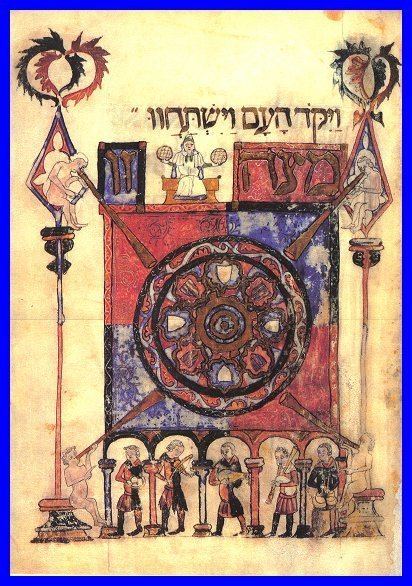 | ||
The Jewish western art music is the art music which is created for performing and singing in a synagogue and is similar to the creation of church music known as classical music. Musical composition of verses for service is used for playing in liturgical events, holidays and shabbats as well as para- liturgical service events such as: weddings, Brit Milahs, and other performances with a Religious ground motive.
Contents
This music was played among Jewish communities in Italy in Avignon of France and in the city of Amsterdam during the 17th and 18th centuries. The music is an organized language in notes, composed and artistically printed, then presented to professional singers and instruments players to practice and perform in front of an audience. Hence, it is considered artistic music and not folk music. The Western Jewish Art Music sounds very much like the western non-Jewish one, and is written according to the western style principles of the period its created in. As such, this phenomenon was controversial, and highly criticized among the Jewish communities where it was performed.
History
Musical background
Combining music in religious ceremonies is a common costume in the human culture. The influence music has on its listeners is mentioned in the Byble on different occasions. Three examples of that are:
The Masoretes who strived to create uniformity to the Jewish prayer invented the nikkud (Hebrew vocalization) and Cantillation, which later became a significant layer for the Jewish prayer standardization. However, the Cantillation versions differ, therefore it is not possible to know the tune that it was sung in the period it was written. Similar phenomena have occurred in the Christian Church. During Charlemagne's period in the 9th century, Due to the requirement of the Church to unify all versions of the Christian prayer early musical notes have been invented, whichrevolutionized the world of western music: it created a unified language understandable to anyone who acquired the knowledge of music notation.
Music notation is the system used to visually represent aurally perceived music through the use of written symbols. Since its creation, the western music has developed and become a significant language for western music documentation. The voices and harmony arrangement elements as well as the various components it has, are an important element in the justification given for performing a western-style music in the synagogue.
Obadiah the Proselyte
The issue of Obadiah the Proselyte in the music field is still being researched. 3 melodies which are Genizah fragments in the Cairo Geniza are being held at Cambridge University and at Jewish Theological Seminary of America library in New York city. These tunes were written in the neumes musical notes by Obadiah the Proselyte in the first half of the 12th century. These characters are the earliest musical written work from a synagogue written in western notes which can be read by means known to music scholars.
Obadiah the Proselyte was a christian member of the nobility who converted to Judaism and was familiar with writing music using musical notation. One of the findings is a musical performance segment of biblical texts, which he probably learned from one of the Near East communities where he stayed following his conversion in the year of 1102. Among the melodies is "Who's on Mount horev" which sounds similar to Gregorian chant music style.
The songs of Salamone
The Jewish composer Salamone Rossi was Mantua's Gonzaga family court composer from the late 16th century till the 30s of the 17th century (early Baroque period) who wrote secular music. His book The songs of Salamone ("Hashirim ahser le Shlomo") is one of the earliest writings of synagogue music. In the introduction to the book he describes the sequence of events which led to its publication, where he raises the controversial issue of performing non-religious music in his period style in a synagogue. He emphasises that the songs are composed according to the wisdom of the western music harmony style of the late Renaissance and early Baroque period. He also documents the number of voices in these compositions.
